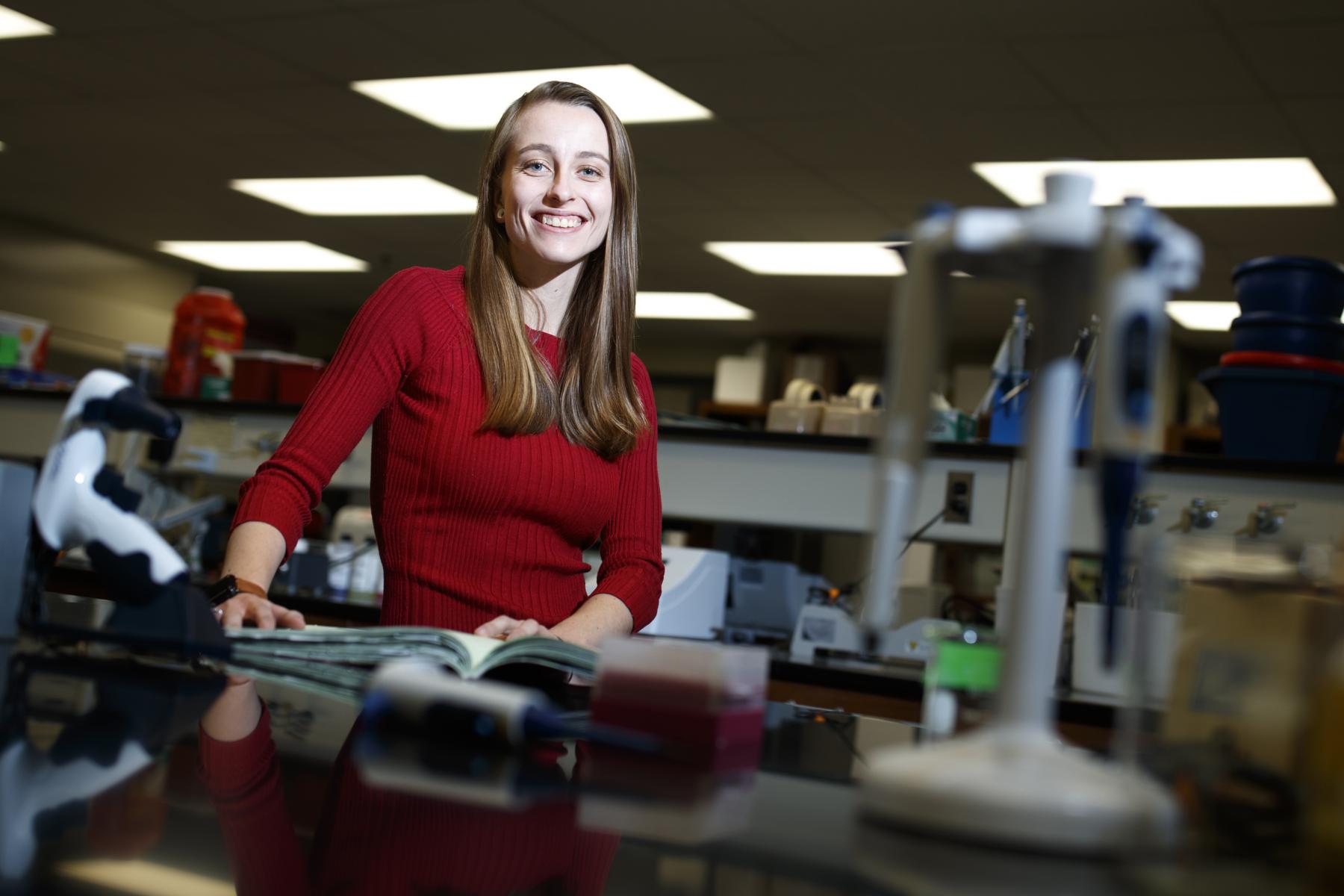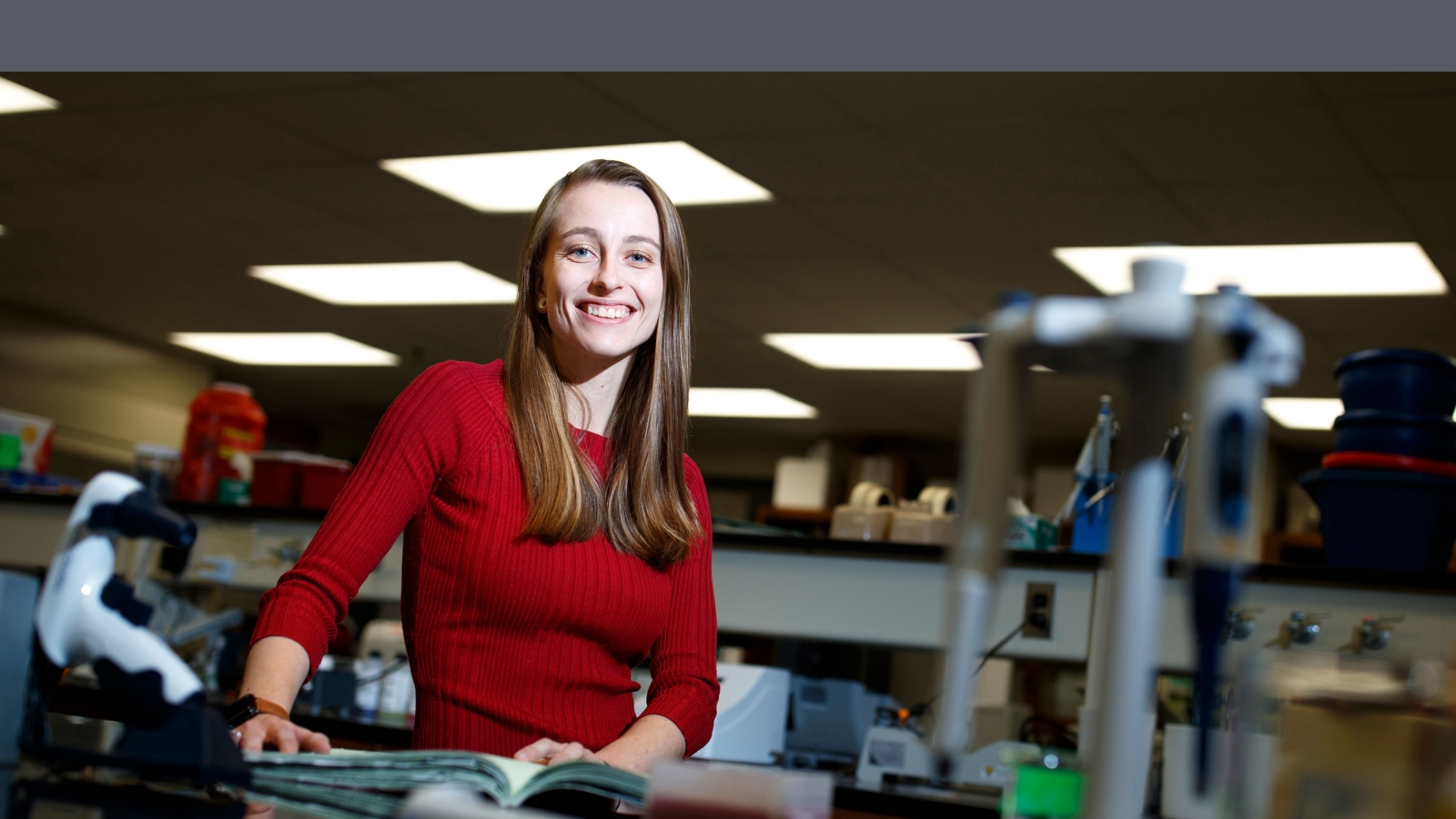UNL research brings swine industry closer to broad virus protection
Written by: Lianna Walker, Graduate Student
Recent research conducted at the University of Nebraska–Lincoln provided the first direct evidence for the role of a gene and DNA polymorphism in facilitating Porcine Circovirus 2 (PCV2) replication and associated disease susceptibility. PCV2 is a small virus responsible for a set of symptoms collectively known as Porcine Circovirus Associated Diseases (PCVAD). Measures to manage and prevent PCVAD outbreaks cost US swine industry more than $250 million/year. PCV2 is found across the globe, but only a small subset of animals in each population will show signs of disease. Currently, there is no way to predict which pigs will develop PCVAD and which pigs will remain unaffected so the entire herd must be vaccinated, posing an increased economic cost to producers. Previous data obtained from field research suggests that a pig’s own genetics may be partially responsible for susceptibility to PCV2.
In order to identify the genetic factors underlying susceptibility, maternal crossbred pigs were experimentally infected with a PCV2b strain and each animal was genotyped for ~60,000 DNA markers. Using these genotypes, a genome-wide association study was conducted for weekly measures of virus (viremia) and antibody levels in blood, total amount of virus (viral load), and average daily gain (ADG). All together, the panel of 60,000 DNA markers accounted for 64% of the observed variation in overall viral load. A previously unexplored genomic region on chromosome 12 explained an important proportion of this variation. Gene prediction methods in combination with extensive DNA sequencing of this region uncovered a DNA polymorphism (SYNGR2 p.Arg63Cys) within the Synaptogyrin-2 (SYNGR2) gene that causes an alteration in the SYNGR2 protein and may impact the ability of this protein to function properly. The favorable genotype (Cys63/Cys63) was associated with lower viremia and higher ADG following PCV2 infection.

In order to validate the potential role of this gene in PCV2 replication, the amount of SYNGR2 gene expression was experimentally reduced in Porcine Kidney 15 (PK15) cells by more than 80%. This reduction in SYNGR2 gene expression resulted in a significant decrease in the amount of virus produced following infection. Additionally, gene editing was performed to generate a PK15 mutant cell line (E1) with a non-functional SYNGR2 gene. These cells were then infected with the same PCV2 isolate. Once again, a significant decrease in the amount of virus generated was observed in the E1 edited cells compared to normal PK15 cells, with little to no evidence of viral multiplication following infection.
All together, the findings of this research provide direct evidence for the role of SYNGR2 in facilitating PCV2 replication and point towards a DNA polymorphism (SYNGR2 p.Arg63Cys) that may be responsible for the variation in PCV2 disease susceptibility. This knowledge enhances our understanding of how PCV2 may act to cause disease, but more importantly will aide in the development of genetic tests capable of predicting susceptibility prior to PCV2 exposure. The ability to distinguish susceptible animals at an early age and select for those with increased resistance has the potential to elevate animal welfare and reduce the high production costs associated with current PCV2 management regimes.
This study was led by Daniel Ciobanu from the Department of Animal Science of the University of Nebraska-Lincoln and involved Nebraska graduate students Lianna Walker, Taylor Engle and Emily Tosky, and also Thomas Burkey, and Hiep Vu (Department of Animal Science), Stephen Kachman (Department of Statistics), Dan Nonneman and Timothy Smith (U.S. Meat Animal Research Center), Tudor Borza (Dalhousie University) and Graham Plastow (University of Alberta). The results of the study were recently published in PLOS Genetics at https://journals.plos.org/plosgenetics/article?id=10.1371/journal.pgen.1007750.
